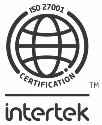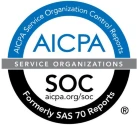Please read the article below written by
Mike Fitzgerald about the real value from Insurtech. Although from last year, across all our discussions with existing clients and prospects this is one of the biggest theme, speed and agility. INSTANDA is continuing to meet this need and investing further in enhancing the platform capability to be at the forefront of the industry.
The long-term sustainable value from insurtech lies in its ability to change how insurance products are created.
The economic model behind how startups bring their products to market is bending — no, breaking — the traditional development cost curve. Insurers which recognize this dynamic and adjust their innovation activities accordingly will create more value form insurtech than their competitors.
Insurtech has already gone through at least two iterations in its short lifespan. A little more than a year ago, the market was abuzz about widespread disruption. Now that it is recognized that there is value in integrating insurtech, partnership is the rage. The next phase will see an increase in greenfield operations. Over the next 12 months, the economics of insurtech development will result in a significant increase in spin-offs and stand-alone propositions.
The reasoning is this – economics will motivate different behavior. Traditional insurance product development is typically characterized by these approaches/tools/techniques:
- Product or process-centered design
- Waterfall development (although agile techniques are catching on)
- Centralized, on-premise infrastructure
- Package or custom-built software
- Periodic release and control procedures
- Service-oriented architecture (SOA) integration
Contrast that with insurtech operations. They are typically characterized by these approaches/tools/techniques:
- Customer-centered design focused on delivering a minimal viable product as quickly as possible to the market
- Agile development using small teams
- Cloud infrastructure
- Microservices architecture
- Use of DevOps to control updates
- Use of open source software
- API integration
Here is where the economics comes in. Without reading ahead, answer the following question:
If you spend $1 delivering a specific set of functionality in the traditional approach, what amount would be needed to deliver exactly the same functionality using the new development approach?
The answer ranges between 20 and 30 cents on the dollar. So, call it a quarter. That means that a $4 million dollar project delivered with the traditional approach is only $1 million using the new tools/techniques. Or, better yet, entire propositions, which include changes to both the insurance product and a new automation platform, can be delivered for under $4 million. (For more on this, see the
@Celent_Research report
Slice Labs: A Case Study of Insurance Disruption.)I have been asking this question for the last two months. It is a tricky one, because the best input comes from the limited number of people who have delivered insurance products in both the traditional
and the new development approach. These few professionals have “lived” both environments. My sample size is small so far, but I have polled about 30 people.
With this cost profile, a greenfield startup approach becomes much more attractive. Investing in a new product/market approach is much less risky given the smaller level of investment. If we marry this with the innovation fatigue expected as incremental efforts fail to deliver sufficient value to the core business, the environment is ripe for spin-offs.
This is not to say that the current “partner with a promising insurtech firm” or the “we want to make innovation part of our culture” approaches will go away. However, expect to see significantly more stand-alone efforts than we have seen in the past.
Immediate adjustments to this opportunity include:
- Insurers should include multiple start-ups in their innovation portfolios
- Insurance software/IT services providers and venture groups should help both insurers and insurtech firms to set up greenfield propositions
- Insurtechs should look beyond incremental solutions and apply their talent and techniques to entire insurance propositions
As some of the spin-offs succeed (and most of them fail), insurers will learn how to develop in the new environment and will transfer these techniques to their core business. As a result, the true value of insurtech will not be an either/or choice, but change through absorption of new approaches and techniques.
Insurtech = new way to develop insurance products
Source:
Celent






